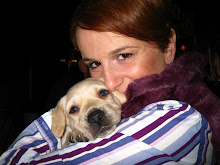Holding the reins in my left hand, I gingerly put my left foot into the stirrup and swing my right leg over Daffyd's back. Gently I settle into the saddle.
Daffyd makes no movement, waiting till I gently nudge his girth with my calves, signalling that I want him to start walking, making our way out of the stables, slowly, onto the road that leads to the practice arena.
It has been three weeks since I entered that very same arena on Daffyd's back. Three weeks since I flew off, knocking myself unconscious, causing the most unpleasant headache which led to three weeks of rest at home.
My doctor has now given me the all clear. I can start riding slowly again. No jumping for the time being. I won't beat around the bush and say that I am not apprehensive. There is no such thing as a fearless person, fear is one of the most basic human emotions and it serves us well protecting us from danger. In our society admitting to fear is tantamount to showing weakness. But in reality it is not. It is a responsible and sensible way of limiting danger to ourselves and potentially those around us.
Closing the school gate behind me, Tommy, my instructor, advises me to take things slowly. At my own pace. There is no deadline. There is no pressure to prove anything. At the first instance of discomfort I must stop. Things will fall into place, he reassures me whilst I head for the Dressage arena.
Steering Daffyd around the arena a couple of times, I gently progress into a rising trot, achieving an immediate rhythm which Tommy is very pleased with. Slowly we start working on some basic dressage exercises – twenty metre circles in different directions and areas of the school, changing rein, practising a square halt – which requires the horse to bring his fore and hind legs in such a way that when viewed from the side the legs are perfectly in line.
Seeing the direction the training session is taking, Tommy encourages me to undertake a preliminary dressage test. Upon completion, although requiring some fine tuning, the result was very satisfactory and saw me with a grin as big as that of a Cheshire cat. My lesson is over and we slowly head back to the stables.
In equestrian sports, most of the physical work is carried out by the horse but it is the mental attitude of the rider that defines one's limits. Being confined indoors for three weeks, with little to do, gives growth to a number of negative thoughts. It gives you time to start creating a number of “what if” scenarios. Couple that with comments from well meaning friends who give a very graphical example of what could have happened is not conducive to gaining back the mental conditioning required. Ultimately, we need to confront our fears but we must do it in our way and speed. I am just going to do that.
Having stiff muscles from riding again is a great feeling!
Saturday, 31 January 2009
Subscribe to:
Post Comments (Atom)

No comments:
Post a Comment